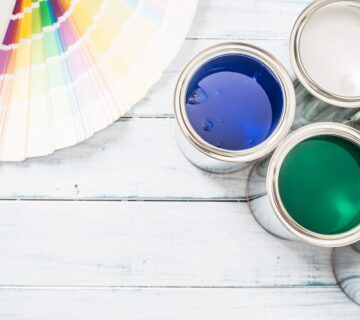Embarking on a DIY paint project can be an exciting endeavor, offering a fresh new look to your home. However, the success of your painting project greatly depends on the preparation work. Adequate preparation not only ensures a smoother painting process but also contributes to a more professional and lasting finish. Properly preparing your home for painting can prevent common pitfalls and frustrations during the painting process. This blog will guide you through the essential steps of preparing your home for a DIY paint project, ensuring that you achieve the best possible results.
Assessing the Space
The first step in preparation is to thoroughly assess the space you plan to paint. Consider the size of the room, the condition of the walls, and the type of surface you will be working on. This assessment will help you determine the amount of paint needed, the type of paint to use, and the tools required for the job. It’s also important to consider the room’s function – kitchens and bathrooms, for instance, may require paint that is more resistant to moisture. Understanding the specific demands of the space ensures that the paint job lasts longer and looks better.
Clearing and Protecting the Area
Once you have assessed the space, the next step is to clear the room as much as possible. Remove furniture or move it to the center of the room and cover it with drop cloths or plastic sheets. Don’t forget to protect the flooring as well. Using drop cloths or old sheets can save your floors from paint drips and spills. This step is crucial to avoid any accidental damage and make the cleanup process easier after painting.
Cleaning and Repairing Surfaces
Clean walls are crucial for a successful paint job. Dust, dirt, and grease spots can interfere with the paint’s ability to adhere properly to the wall. Wash the walls with a mild detergent and allow them to dry completely. After cleaning, inspect the walls for any cracks, holes, or imperfections. Use spackle or a suitable filler to repair these flaws, then sand the area smooth. This step is vital for achieving a professional-looking finish, as it creates a clean, even surface that enhances paint adherence and appearance.
Taping and Edging
One of the most critical steps in preparation is taping off areas you don’t want to be painted, such as window frames, door frames, and baseboards. Painter’s tape is specifically designed for this purpose and can be easily removed after painting without leaving a residue. Taking the time to tape properly can make a significant difference in the neatness of your paint job. Proper taping ensures crisp, clean lines and protects fixtures and fittings from accidental brush strokes.
Priming the Walls
Priming is an often overlooked but important step, especially if you’re making a drastic color change or painting over a dark color. Primer provides a smooth, even base for your paint, improving its adhesion and enhancing the true color of the paint. In some cases, primer can also help in reducing the number of coats of paint needed. It acts as a barrier that seals the original wall color and surface irregularities, which helps achieve a uniform finish.
Final Thoughts
Preparing your home for a DIY paint project might seem time-consuming, but it is a critical phase that should not be rushed. Proper preparation sets the stage for a successful painting project, ensuring a smoother application and a more beautiful, long-lasting finish. By following these steps, you can transform your space into a professionally painted haven. Dedication to thorough preparation not only enhances the quality of your paint job but also maximizes the longevity and impact of your renovation efforts. Discover more about DIY painting and get further insights on our website at sisupainting.com and explore our blog at sisupainting.com/blog.





No comment